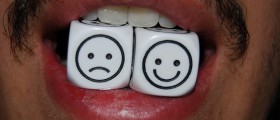Cyclothymia or cyclothymia disorder is one of the mood disorders and is not as severe as bipolar II disorder. Cyclothymia is characterized by mild depressive and mania phases, while between these two stages, the person usually feels well.
Symptoms of Cyclothymia
Hypomaniac cyclothymia stage has its well-recognized signs, such as increased physical activity, rapid speech, euphoria, great optimism, and sleeplessness. Agitation and aggressive behavior are also very frequent in this phase of cyclothymia, and the person who suffers from this usually has increased sexual drive and is often not able to concentrate.

Furthermore, the person is inconsiderate of others or has poor judgment. Racing thoughts and risky behavior are also symptoms of hypomanic cyclothymia. In the cases when the person has the symptoms such as suicidal thoughts, sadness, anxiety, and guilt, then he or she is in the depressive phase of cyclothymia disorder.
In addition to these symptoms many others may occur, for example, decreased sexual drive, appetite problems, hopelessness, and chronic pain without apparent reason.
Best Medications for Cyclothymia
Once diagnosed, cyclothymia must be treated because otherwise, it can lead to serious bipolar disorders and can have an extremely negative effect on the emotional life of the person who suffers from this kind of emotional disorder. The physician must do some tests before diagnosing cyclothymia, and they include physical tests, laboratory tests, and psychological assessments.
It is very important to take medications correctly and consistently in order to control cyclothymia and prevent hypomania and depression. Medications used for this disorder can be divided into four groups: mood stabilizers, anti-seizure medications, antidepressants, and other medications.
• Mood stabilizers are the most frequently prescribed for cyclothymia because they stabilize and regulate mood. Lithium is the most commonly used as a mood stabilizer.
• Anti-seizure medications are popularly known as anticonvulsants. They are very potent in preventing mood swings, and the most popular anticonvulsants are valproic acid, Divalproex sodium, and lamotrigine.
• Olanzapine and risperidone are two atypical antipsychotic medications that are proven to be very good for those who do not react to anticonvulsants. Benzodiazepines, as well as quetiapine, are regarded to be very helpful for treating cyclothymia.
• Antidepressants combined with a mood stabilizer are also recommended, although antidepressants alone should not be used to treat cyclothymia, because mania episodes may suddenly occur.
- Genetic factors have been robustly implicated in the etiology of cyclothymia. This influence is demonstrable by the concordance rate--57%--seen in monozygotic twins. Current genotypic studies are investigating several loci, including 18p11, 13q32, CLOCK genes, and ANK3.
- Cyclothymia is associated with a lifetime prevalence of approximately 0.4%-1% and a male to female ratio of 1:1. Prevalence may increase in clinics with some surveys reporting rates as high as 5%.
- The treatment of cyclothymia rests upon managing risk factors, recognizing early symptoms, and implementing appropriate interventions, including psychoeducation, pharmacotherapy, and counseling. The primary target of the aforementioned therapies should be focused on the pervasive underlying affective dysregulation.
- Psychoeducation is paramount and emphasizes the necessity of medication compliance, confidence in the doctor, acknowledging the interpersonal consequences of the maladaptive behavior patterns, and acceptance of the illness. To date, there are no approved FDA-recommended psychotropic medications for the treatment of cyclothymic disorder. In spite of this, there still remain viable alternatives in the management of this disorder.
- First-line psychotropic treatment of cyclothymia is the administration of a mood stabilizer--valproate if anxiety is dominant, lamotrigine if the anxious-depressive polarity is more prominent, and lithium for significant affective intensity. Some patients may benefit from the dual therapy of both lithium and lamotrigine.
- Furthermore, atypical antipsychotics can be applied as a monotherapy or an adjunct in conjunction with a mood stabilizer.
High blood pressure, an increase in weight, and diabetes are the most common side effects that can appear while using the medication for cyclothymia. Cognitive behavioral therapy, family therapy, group therapy, and social rhythmic therapy are four types of psychotherapy that are, besides medications, one of the most effective ways to treat cyclothymia.

















Your thoughts on this
Loading...